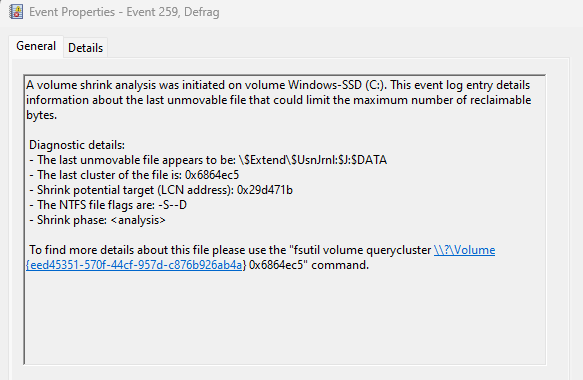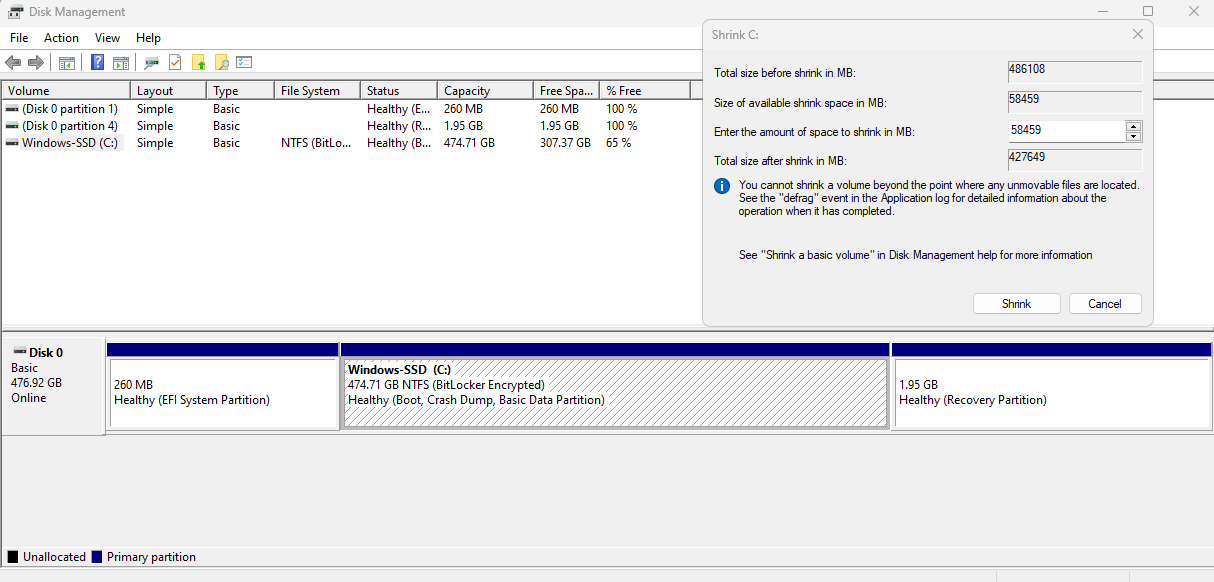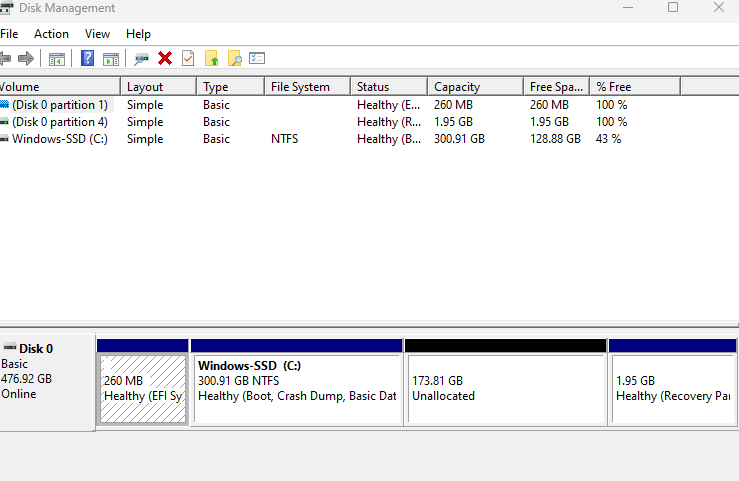You should be able to remove that file (and recreate it later). More info here: https://superuser.com/questions/819901/dangers-of-deleting-c-extend-usnjrnljdata#819976
I’ve run into this before, it’s mainly that windows is bad at identifying “unmovable” files. Just delete it as described in that link, try the shrink again, and recreate after.
Usual caveats apply: no guarantees, make sure there’s backups or no critical info on the system, if this messes up your system it’s on you, etc.



 additional info
This is what happens when Gparted live USB is selected during boot, any fix pls
additional info
This is what happens when Gparted live USB is selected during boot, any fix pls